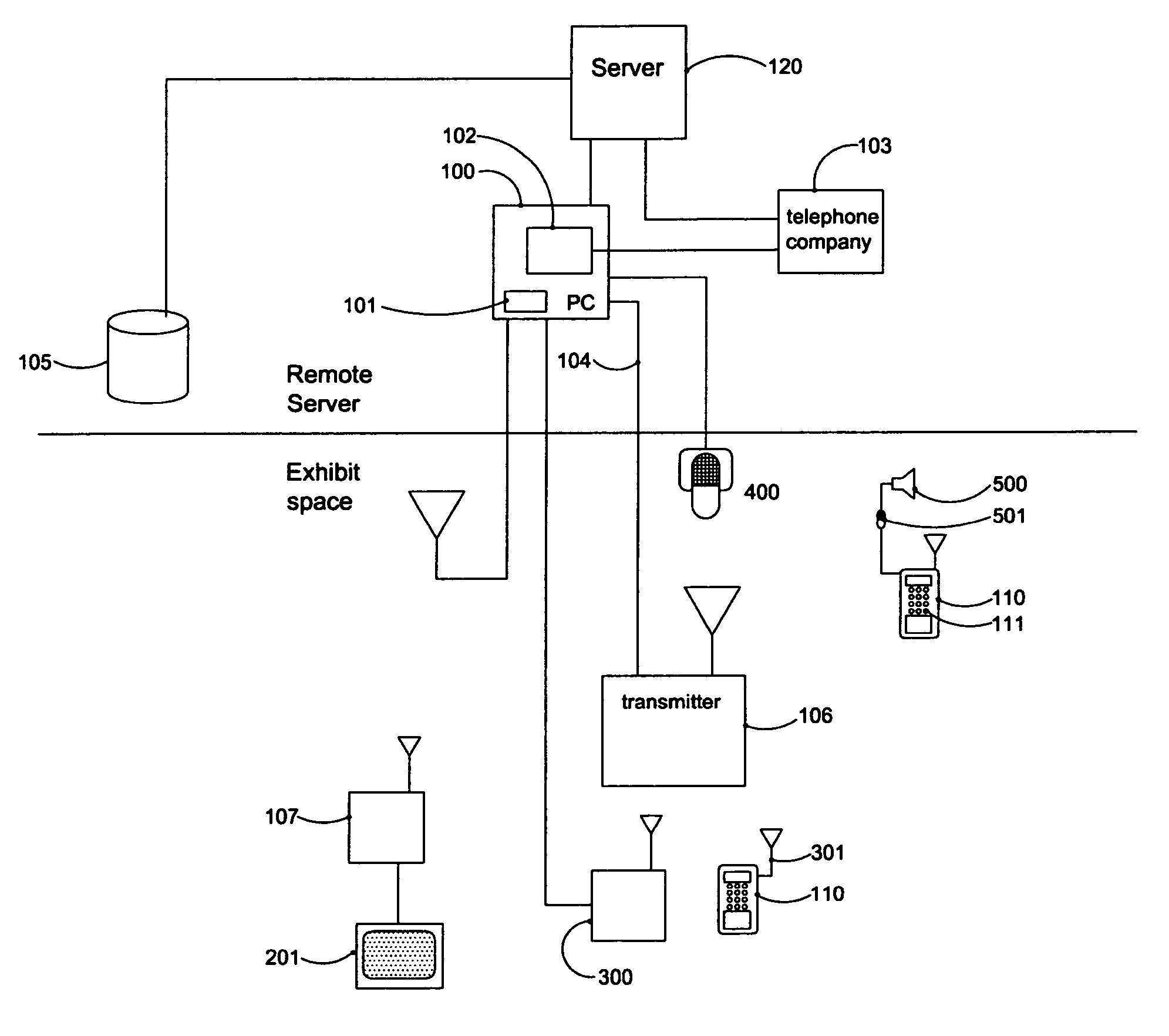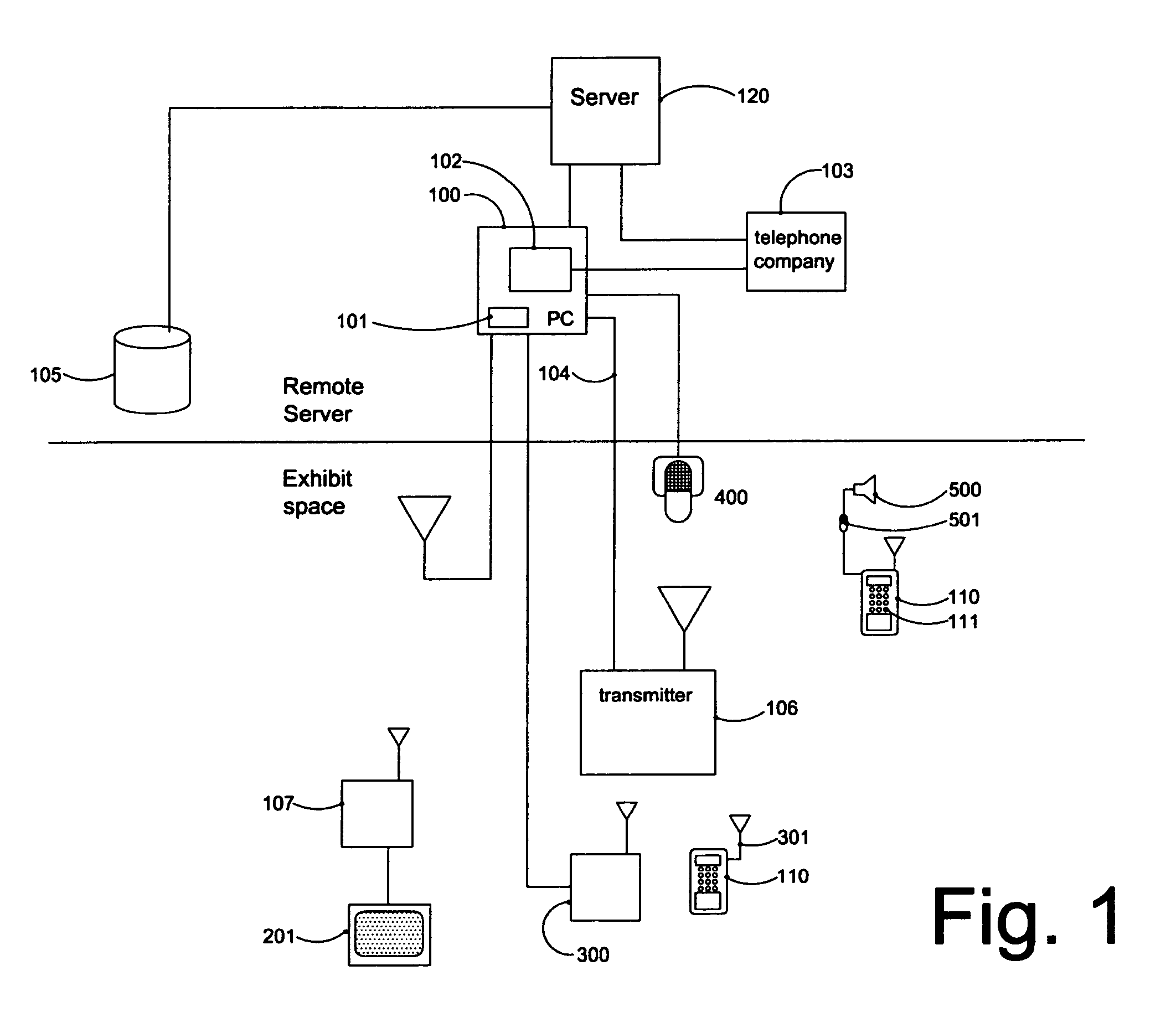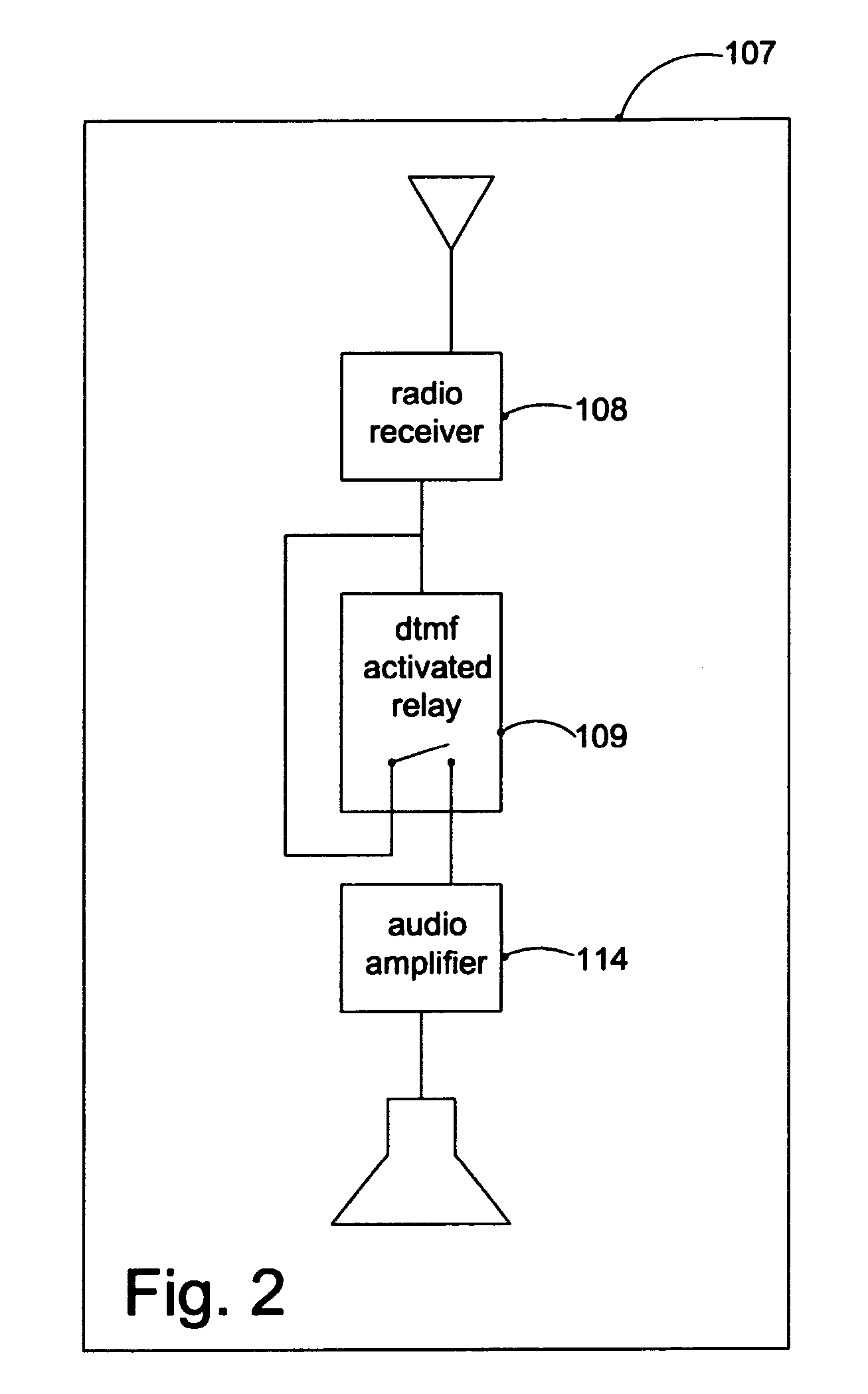System for guiding visually impaired pedestrian using auditory cues
a technology for visually impaired pedestrians and auditory cues, applied in the direction of navigation instruments, instruments, using reradiation, etc., can solve the problems of typical navigation techniques, and insufficient use of canes and memory
- Summary
- Abstract
- Description
- Claims
- Application Information
AI Technical Summary
Benefits of technology
Problems solved by technology
Method used
Image
Examples
Embodiment Construction
Background
[0007]The system incorporates the following components (see the diagram in FIG. 1):
[0008]A computing device (100), like a personal computer or the equivalent, with the capability of operating telephone calls automatically or, as explained below, some kind of data networking connection. In the preferred embodiment, the computer contains an expansion card (102) that provides computer telephony functionality and connects the computer (100) to the telephone system (103). This device senses rings, picks up and then senses audio as well as generates audio onto the telephone line. Practitioners of ordinary skill will recognize that a variety of stand-alone devices can be used for the equivalent functionality. The practitioner of ordinary skill will also recognize that instead of telephone network connections, other kinds of data networking between the handset held by the user (110) and the system (100) may be used, for example, wireless data networking. In this case, the computer...
PUM
 Login to View More
Login to View More Abstract
Description
Claims
Application Information
 Login to View More
Login to View More - R&D
- Intellectual Property
- Life Sciences
- Materials
- Tech Scout
- Unparalleled Data Quality
- Higher Quality Content
- 60% Fewer Hallucinations
Browse by: Latest US Patents, China's latest patents, Technical Efficacy Thesaurus, Application Domain, Technology Topic, Popular Technical Reports.
© 2025 PatSnap. All rights reserved.Legal|Privacy policy|Modern Slavery Act Transparency Statement|Sitemap|About US| Contact US: help@patsnap.com



